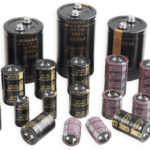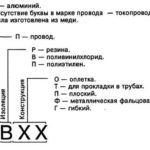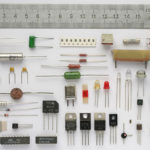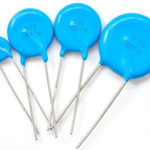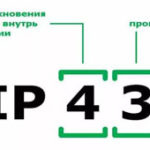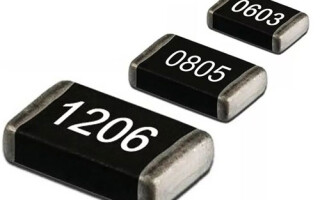Leadless resistors (SMD), like other components, require marking. From it you can get information about the value of the resistor and its accuracy. But in the case of SMD components, dimensions become a problem. It is impossible to apply a full alphanumeric designation in a limited space. Color stripe marking also not an option - there is also not enough space to place the required number of labels. The problem will also be the definition of the first familiarity (where to start reading): a thickened line or a shift of the marking to one of the sides will also require additional space. Therefore, a special notation system has been adopted for non-terminal elements.
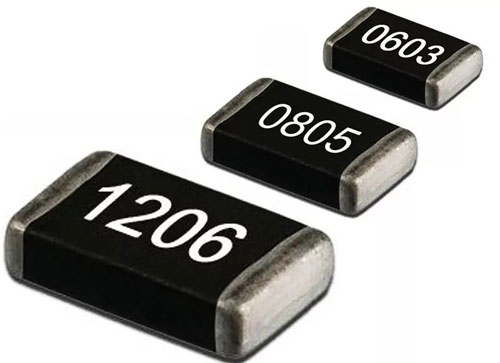
Content
What is the marking of SMD resistors
Surface mount resistors are marked by applying three or four digits to the top of the case. These symbols are only enough to indicate the nominal resistance and, in certain cases, the accuracy.
There is no place on the surface of the element to indicate the power, therefore this characteristic can only be determined visually, by the dimensions of the resistor. However, in most cases this also applies to output elements, especially those with color marking.
Three-digit numbering of resistors with a tolerance of 2%, 5% and 10%
If three symbols are applied to the body of the device, this means that the resistor has an accuracy of 2% to 10%. There are two options for three-digit marking of electronic components - fully digital and alphanumeric designation.
Three digits
In most cases, the marking consists of three digits XYZ. They represent resistance as XY⋅10Z. An example of such a designation is 332. The first two digits mean 33 Ohms, and the third is the power to which the number 10 must be raised, and then multiplied by 33. Simply, this means the number of zeros that must be attributed to the right to the first two numbers. In this case, the marking means 3300 Ohm = 3.3 kOhm. If the third digit is zero, then nothing needs to be attributed (10=1). So, marking 100 means 10 ohms (10 × 1). Decimal factors less than one (0.1 or 0.01) are absent in this system.
Two numbers and the letter R
If the letter R is used in the marking, this means that its resistance is less than 10 ohms, and the value is not equal to a whole number of ohms. The letter symbol indicates the position of the decimal point. The general view of the marking can be 3R3=3.3 Ohm or 0R5=0.5 Ohm.
Four-digit resistor numbering
Three characters are not always enough to label electronic components. In some cases, you have to put additional characters. For instruments with an accuracy of 1% or better, a two-digit mantissa is not sufficient. They are denoted by a digital code in the form of WXYZ, and the resistance value will be WXY⋅10Z. Here Z also means how many zeros should be assigned to the right. So, for marking 7992, two zeros must be attributed to the number 799. The result will be 79900 Ohm = 79.9 kOhm.
For values less than 1 ohm
If the value of a one percent resistor is 1 ohm or less, then three characters are also not enough to mark its resistance. Therefore, a four-digit designation is used. Zero is not indicated to save space, the decimal point symbol is in the first place, followed by three digits indicating the resistance. If the case is marked R100, this means that this is a one percent resistor with a nominal value of 0.1 ohms.
Marking SMD resistors according to EIA-96
Four-character parameter designation resistors is not the optimal method. Still, there is not enough space for four characters on small-sized cases. Therefore, devices with an accuracy of 1% for form factors below 0805 use a different marking system, consisting of two numbers and an alphabetic character. This designation is introduced by the standard EIA-96, according to which two digits mean the nominal value in ohms, and the letter means the multiplier.
Table of codes and values for marking resistors
In the EIA-96 standard, there is no direct correspondence between the marking numbers and the denomination. The code is associated with the actual resistance value. To determine the resistance value, you must refer to the table:
Table 1. Table of codes and values for marking resistors according to EIA-96.
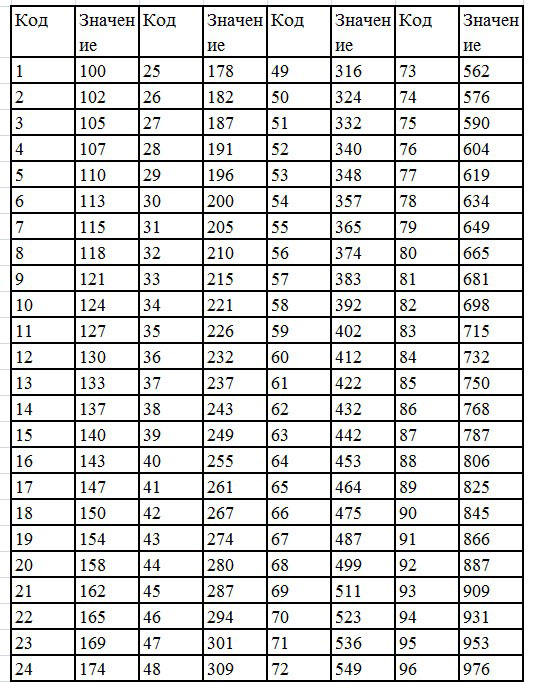
So, code 20 corresponds to a value of 158 ohms, and code 69 to 511. Obviously, it is very difficult to remember the correspondence between the code and the value. Therefore, it is recommended to use a table or an online calculator.
Multiplier table
The multiplier table is smaller, but also non-obvious and hard to remember:
Table 2. Table of letter multiplier values in EIA-96 resistor labeling.
| The code | Factor |
|---|---|
| Z | 0.001 |
| Y or R | 0.01 |
| X or S | 0.1 |
| A | 1 |
| B or H | 10 |
| C | 100 |
| D | 1000 |
| E | 10000 |
| F | 100000 |
This means that the full value of the resistor marked 22A is 165 × 1 = 165 Ohm, and 44B is 280 × 10 = 2800 Ohm = 2.8 kOhm.
Examples of decoding alphanumeric marking of SMD resistors
To determine the parameter of the resistors, it is not necessary to memorize tables of values. There are many online calculators on the Internet, and many offline programs are also available for download. But if you understand the principles of marking, it is possible to determine the values of resistance and accuracy without resorting to reference books, after a little training, this is obtained at a glance. To consolidate the understanding of the basics, it is necessary to analyze a few practical examples.
Resistors 101, 102, 103, 104
In all these examples, the numerical value of the resistance is the same, and is equal to 10, but the multipliers in each case are different:
- 101 - 10 ohms must be multiplied by 101, that is, by 10, or assign one 0 to the value - as a result, you get 100 ohms;
- 102 - 10 ohms must be multiplied by 102, that is, by 100, or assign two zeros to the value - you get 1000 Ohms (= 1 kOhm);
- 103 - 10 ohms must be multiplied by 103, that is, by 1000, or assign three zeros to the value - you get 10,000 ohms (= 10 kOhm);
- 104 - 10 ohms must be multiplied by 104, that is, by 10,000, or assign four zeros to the value - you get 100,000 Ohms (= 100 kOhms).
It is easy to remember that for a three-character encoding, the last digit 3 stands for kiloohms, and 6 for megaohms - this will further facilitate the visual reading of the marking.
Resistors 1001, 1002, 2001
If 4 digits are applied to the body of an electronic component, this means that its accuracy is not lower than 1%. And the denomination also consists of a mantissa and a multiplier, which is set by the last character:
- 1001 - 100 ohms must be multiplied by 101, that is, by 10, which is equivalent to attributing one zero to the mantissa - as a result, you get 1000 Ohms (1 kOhm);
- 1002 - the mantissa is also 100 ohms, but the multiplier is 102\u003d 100 (two zeros must be assigned), and the denomination will be equal to 10000 Ohm \u003d 10 kOhm;
- 2001 - in this case, 200 ohms must be multiplied by 101\u003d 10, the nominal value is 2000 Ohm \u003d 2 kOhm.
Fundamentally, the reading of this marking does not differ from the three-character one.
Resistors r100, r020, r00, 2r2
If the resistor is marked with the letter R, it can be immediately mentally replaced with a decimal point:
- R100 means ",100" - adding a zero before the decimal point gives the value 0.100 ohms = 0.1 ohms (resistor with 1% accuracy).
- R020 - according to the same principle, ".020" turns into 0.020 Ohm = 0.02 Ohm;
- R00 means a resistor with zero resistance - such elements are used as jumpers on the board (often this is more technologically advanced in production);
- 2R2 - three characters mean an accuracy of 2% or less, the nominal value is 2.2 ohms.
If the resistance value of 2%, 5% or 10% of the element is less than 1 ohm, a zero is applied before the letter R (for example, 0R5 would mean 0.5 ohms).
Resistors 01b, 01c
To determine the denomination, one must refer to the tables of mantissas and multipliers:
- 01B - code 01 denotes a resistor with a "base" resistance of 100 ohms, multiplier B=10, total resistance 100x10=1000 ohm=1k ohm;
- 01C - this option differs from the previous one only by a factor (C is equivalent to 100), and the full rating is 100x100 \u003d 10000 Ohm \u003d 10 kOhm.
From the above examples, it can be seen that the same resistor value, depending on its design, can be marked differently. So, a resistance of 1 kOhm can be coded:
- 102 - for 2-10% of the series;
- 1001 - for 1% of the series;
- 01B - for small-sized resistors of 1% of the range.
This notation is used on 90+ percent of leadless devices manufactured worldwide. But there is no guarantee that any manufacturer does not apply its own marking system. Therefore, in case of doubt, the most reliable way is to measure the actual resistance value multimeter. After a little practice, this will not be difficult. The same method is the only one for the smallest SMD elements - they are not marked at all.
Similar articles:

